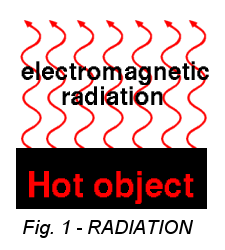Heatsink Guide - The Basics of Cooling & Heatsink Technology
by Tillmann Steinbrecher on January 5, 2000 12:02 AM EST- Posted in
- Guides
Back in the days of 486 CPUs with clock speeds of up to 50 MHz, PC processors got along fine without any cooling devices, and nobody paid much attention to CPU cooling. The first x86 CPU in which a heatsink was recommended (but not necessarily required) was the 486DX2-66. Over the years, the power usage of CPUs has been increasing constantly, and today, where even many graphics chips need coolers, a CPU without a heatsink is unthinkable. Reason enough to have a closer look at the technology behind heatsinks!
The Physical Effects
To make it simple, a heatsink is nothing else then a strangely formed piece of metal. How does it dissipate the heat generated by the CPU?
Well, there are three ways how an object can get rid of heat: Radiation, conduction, and convection.
Radiation, as the name suggests, means that the heat is simply radiated away from the object, through electromagnetic radiation (photon transport). This effect is not bound to gas or other substances surrounding the heatsink. Radiation will even take place in a vacuum. How well an object can radiate heat depends on the material and the color (black is best). See fig. 1 for an illustration.
Conduction is the exchange of kinetic energy between molecules. Less energetic (lower temperature) particles gain kinetic energy by colliding with more energetic particles (through physical contact). Since direct contact is required, a heatsink (surrounded by air) cannot get rid of heat using conduction. However, conduction is the effect that's responsible for the heat transfer from the CPU to the heatsink.
Convection is heat transfer by movement of a heated substance (gas or liquid). This means that the heat is transferred to the molecules of the gas (or liquid) surrounding the hot object, and then transported away through movement of molecules. If the gas or liquid around the object is forced into movement (e.g. by a fan blowing air across a heatsink), then we're dealing with forced convection (see fig. 2).


Forced convection is the effect that's mainly responsible for the cooling capabilities of a fan-heatsink combo. When a CPU cooler cools a CPU, most heat is dissipated by forced convection, and only in very, very small part by radiation.










0 Comments
View All Comments